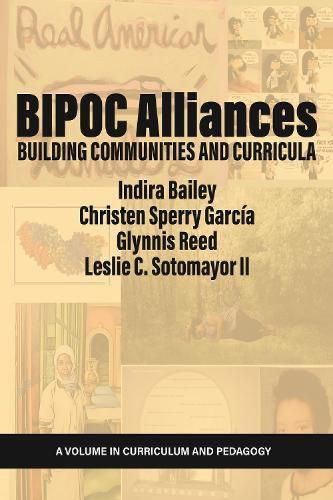Readings Newsletter
Become a Readings Member to make your shopping experience even easier.
Sign in or sign up for free!
You’re not far away from qualifying for FREE standard shipping within Australia
You’ve qualified for FREE standard shipping within Australia
The cart is loading…






This title is printed to order. This book may have been self-published. If so, we cannot guarantee the quality of the content. In the main most books will have gone through the editing process however some may not. We therefore suggest that you be aware of this before ordering this book. If in doubt check either the author or publisher’s details as we are unable to accept any returns unless they are faulty. Please contact us if you have any questions.
BIPOC Alliances: Building Communities and Curricula is a collection of reflective experiences that confront, challenge, and resist hegemonic academic canons. BIPOC perspectives are often scarce in scholarly academic venues and curriculum. This edited book is a curated collection of interdisciplinary, underrepresented voices, and lived experiences through critical methodologies for empowerment (Reilly & Lippard, 2018). Gloria Anzaldua's (2015) autohistoria-teoria is a lens for decolonizing and theorizing of one's own experiences, historical contexts, knowledge, and performances through creative acts, curriculum, and writing. Gloria Anzaldua coined, autohistoria-teoria, a feminist writing practice of testimonio as a way to create self-knowledge, belonging, and to bridge collaborative spaces through self-empowerment. Anzaldua encouraged us to focus towards social change through our testimonios and art, '[t]he healing images and narratives we imagine will eventually materialize' (Anzaldua & Keating, 2009, p. 247).
For this collection, we use lived experience or testimonios as an approach, a method, to conduct research and to bear witness to learners and one's own experiences (Reyes & Rodriguez, 2012). Maxine Greene's (1995) concept of an emancipated pedagogy merges art, culture, and history as one education that empowers students with Gloria Anzaldua's (2015) autohistoria-teoria to re-imagine individual and collective inclusion by allowing students '... to read and to name, to write and to rewrite their own lived worlds' (Greene, 1995, pp. 147). Greene and Anzaldua reach beyond theorizing and creating curriculum for awareness and expand the crossings into active and critical self- reflective work to rewrite one's own empowered stories and engage in a healing process.
$9.00 standard shipping within Australia
FREE standard shipping within Australia for orders over $100.00
Express & International shipping calculated at checkout
This title is printed to order. This book may have been self-published. If so, we cannot guarantee the quality of the content. In the main most books will have gone through the editing process however some may not. We therefore suggest that you be aware of this before ordering this book. If in doubt check either the author or publisher’s details as we are unable to accept any returns unless they are faulty. Please contact us if you have any questions.
BIPOC Alliances: Building Communities and Curricula is a collection of reflective experiences that confront, challenge, and resist hegemonic academic canons. BIPOC perspectives are often scarce in scholarly academic venues and curriculum. This edited book is a curated collection of interdisciplinary, underrepresented voices, and lived experiences through critical methodologies for empowerment (Reilly & Lippard, 2018). Gloria Anzaldua's (2015) autohistoria-teoria is a lens for decolonizing and theorizing of one's own experiences, historical contexts, knowledge, and performances through creative acts, curriculum, and writing. Gloria Anzaldua coined, autohistoria-teoria, a feminist writing practice of testimonio as a way to create self-knowledge, belonging, and to bridge collaborative spaces through self-empowerment. Anzaldua encouraged us to focus towards social change through our testimonios and art, '[t]he healing images and narratives we imagine will eventually materialize' (Anzaldua & Keating, 2009, p. 247).
For this collection, we use lived experience or testimonios as an approach, a method, to conduct research and to bear witness to learners and one's own experiences (Reyes & Rodriguez, 2012). Maxine Greene's (1995) concept of an emancipated pedagogy merges art, culture, and history as one education that empowers students with Gloria Anzaldua's (2015) autohistoria-teoria to re-imagine individual and collective inclusion by allowing students '... to read and to name, to write and to rewrite their own lived worlds' (Greene, 1995, pp. 147). Greene and Anzaldua reach beyond theorizing and creating curriculum for awareness and expand the crossings into active and critical self- reflective work to rewrite one's own empowered stories and engage in a healing process.